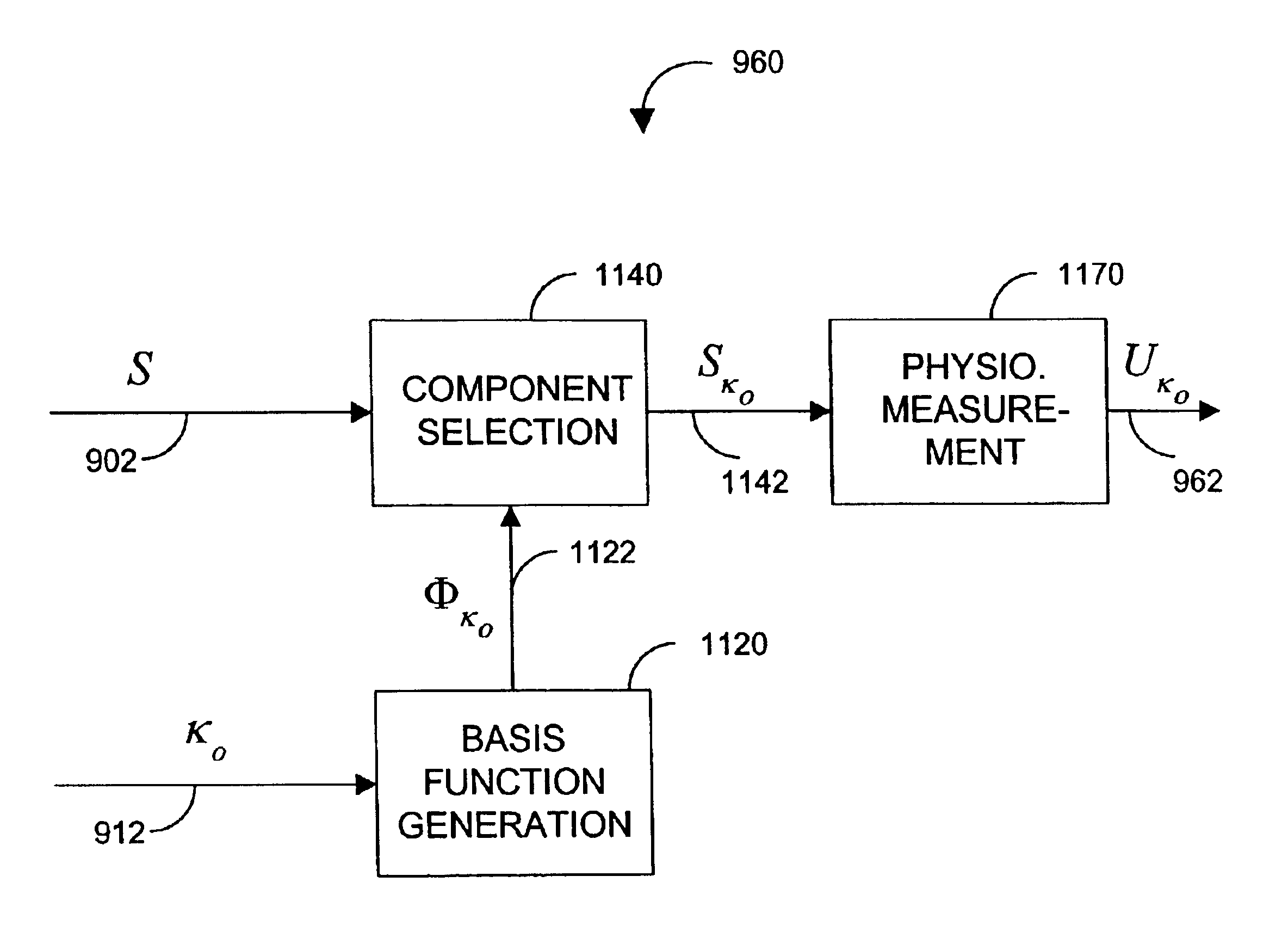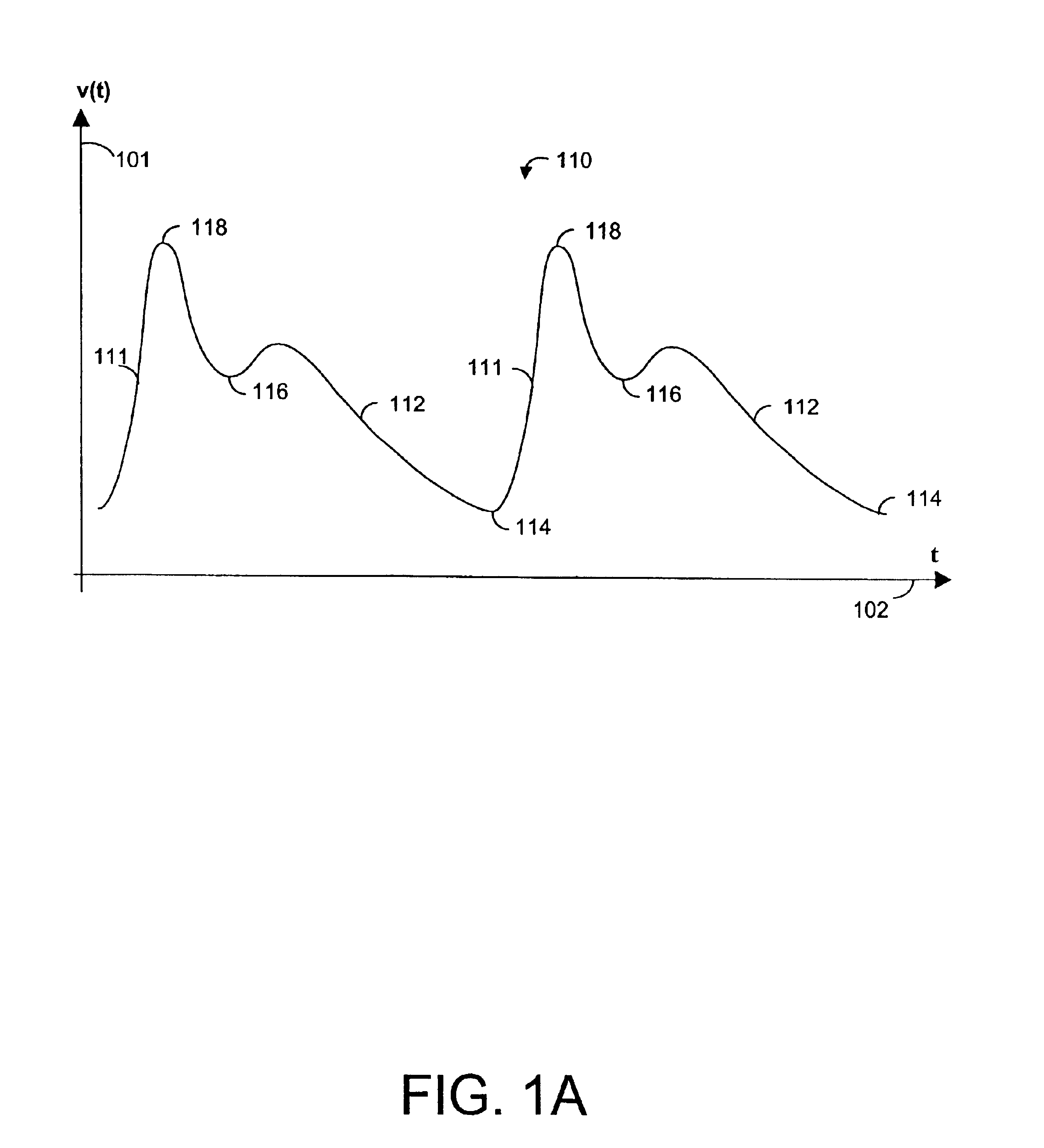Signal component processor
a technology of signal processor and component, applied in the field of signal component processor, can solve the problems of low signal quality, inability to directly detect light absorption, and pulse oximeter, and achieve the effects of improving pulse oximetry measurement, low signal quality, and reducing motion artifact and nois
- Summary
- Abstract
- Description
- Claims
- Application Information
AI Technical Summary
Benefits of technology
Problems solved by technology
Method used
Image
Examples
Embodiment Construction
FIGS. 2 and 3 provide graphical illustration examples of signal component processing. Advantageously, signal component processing provides a direct method for the calculation of saturation based on pulse rate. For example, it is not necessary to compute a frequency transform, such as an FFT, which derives an entire frequency spectrum. Rather, signal component processing singles out specific signal components, as described in more detail below. Further, signal component processing advantageously provides a method of refinement for the calculation of saturation based on pulse rate.
FIG. 2 illustrates high and low signal quality sensor signal spectrums 150, 160 as described with respect to FIG. 1C, above. A frequency window 220 is created, including a pulse rate estimate PR 210. A pulse rate estimate can be calculated as disclosed in U.S. Pat. No. 6,002,952, entitled “Signal Processing Apparatus and Method,” assigned to the assignee of the present invention and incorporated by reference...
PUM
 Login to View More
Login to View More Abstract
Description
Claims
Application Information
 Login to View More
Login to View More - R&D
- Intellectual Property
- Life Sciences
- Materials
- Tech Scout
- Unparalleled Data Quality
- Higher Quality Content
- 60% Fewer Hallucinations
Browse by: Latest US Patents, China's latest patents, Technical Efficacy Thesaurus, Application Domain, Technology Topic, Popular Technical Reports.
© 2025 PatSnap. All rights reserved.Legal|Privacy policy|Modern Slavery Act Transparency Statement|Sitemap|About US| Contact US: help@patsnap.com



